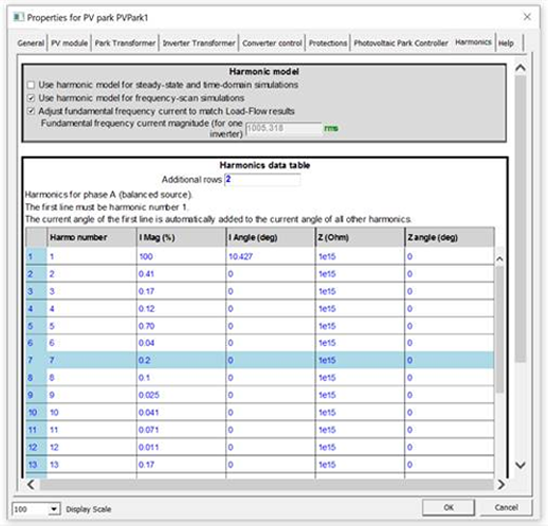Interconnection of large-scale Inverter Based Resource (IBR) such as wind parks (WP) and photovoltaic parks (PV) into the bulk power system has become a more important issue due to their significant impact on power system transient behavior. Failure to perform proper interconnection studies could lead to not only non-optimal designs and operations of IBRs, but also severe power system operation and even stability problems. Manufacturer-specific models are typically favored for the interconnection studies due to their accuracy. These models have been typically delivered as black box models and their usage is limited to the terms of nondisclosure agreements.
Utilities and project developers also require accurate generic models to perform the preliminary grid integration studies before the actual design of the park is decided. Accurate generic models also enable researchers to identify potential grid integration issues and propose necessary countermeasures.
Park converters are controlled by the Power Plant Controller (PPC) which controls the active and reactive powers at the Point of Interconnection (POI). Besides the power control, the PPC may also operate in voltage or power-factor control mode.
WP and PV rely heavily on non-linear controls and power converters, which makes usage of EMT tools necessary in their analysis.
The EMTP® IBR models contain the turbines or PV cells, the converter, the step-up transformer, the collector grid, the power plant controller (PPC)
and the park transformer. The converter control is modeled in detail with the measurement sampling and filtering, the Phase-Locked Loop (PLL), the regulation loops
and the protection system. The regulation loops are implemented in the DQ0 reference frame which allows a decoupled control of the active and reactive power.
The control is staged with a slow loop (outer) and fast loop (inner). The former computes the current reference values, while the latter generates the AC voltage
references that are used to control the converter.
Depending on the study type, a park can be represented as a detailed model or an aggregated model.
The detailed model includes all the individual wind turbines and PV modules, converters, step-up transformers, and control & protection systems. It is the most accurate representation. This model is typically used to simulate events occurring inside the park itself, such as collector grid faults, LVRT/HVRT capability studies, and ferroresonance.
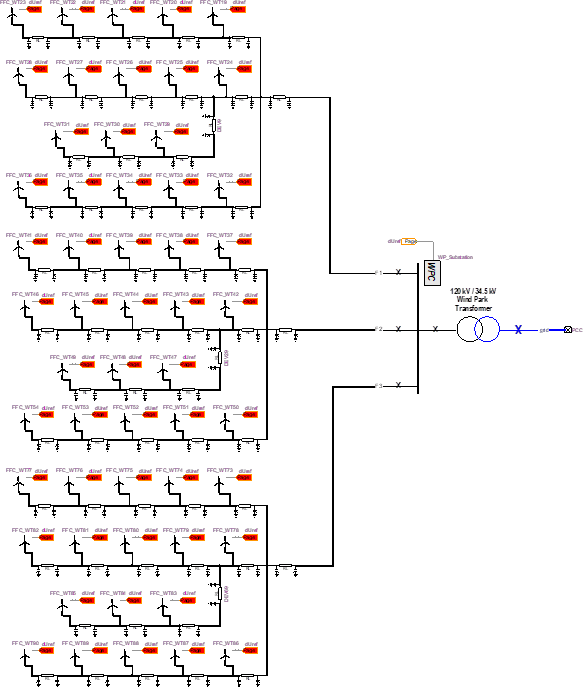
EMTP® diagram of a detailed 54x1.5 MW wind park model
In the aggregated park model, all the individual sub-systems are represented as one equivalent park level component, having therefore a smaller component count, and a better EMT simulation performance. This representation is typically used for grid level analysis.
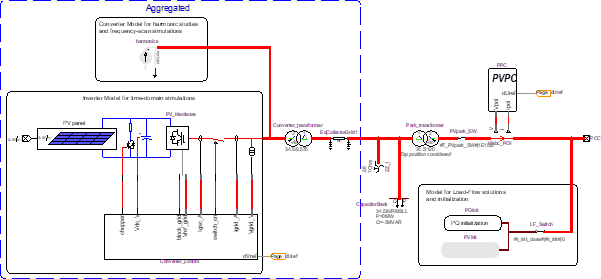
EMTP® model of an aggregated PV park
The aggregation methods for typical collector grid configurations are:
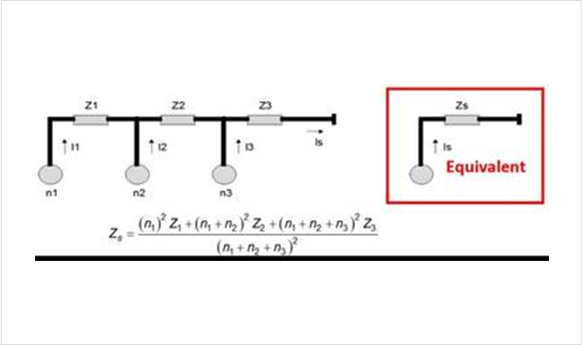
The series daisy chain
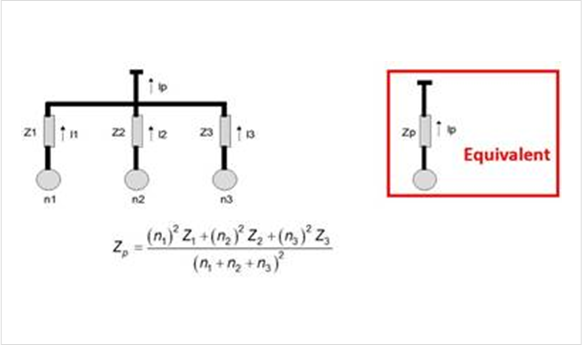
The parallel connection of branches
The converters can be modelled with a detailed representation which includes the PWM commutation of the IGBTs or with an Average Value Model (AVM) where the
converter is modeled by three controlled voltage sources on the AC side and a current source on the DC side. AVM can be simulated with a larger time step.
User can easily switch from a detailed converter model to an average value model.
Large-scale wind parks (WPs) employ variable speed wind turbines (WTs) in order to increase energy capture, reduce drive train stresses and comply with grid code requirements. Doubly-fed induction generator (DFIG) and full converter (FC) WTs fall into this category. The EMTP® built-in models contain the Max Power Point tracking (MPPT) functions which adjust the turbine speed and pitch angle for an optimal power generation.
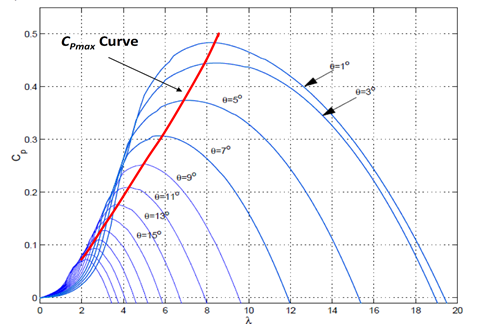
Maximum Cp curve as a function of the blade tip speed (Lambda) and the power conversion coefficient Cp for different blade pitch angles. These curves enable the wind turbine control to select the right pitch angle at every wind speed, while keeping the turbine in the safe operating mode.
The PV cell is modelled to reproduce the power-voltage characteristic.
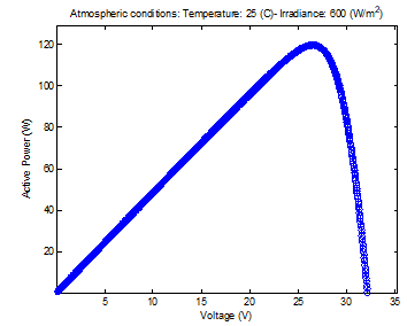
The model is an equivalent electrical circuit with one nonlinear diode:
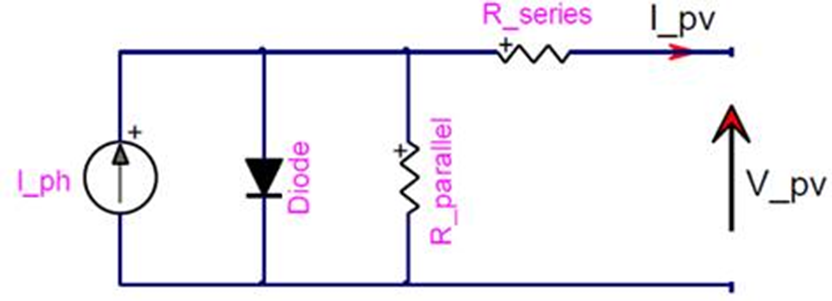
A database of thousands of PV cell manufacturers is available.
If not properly analyzed, the integration of large-scale Wind and Solar parks could lead to non-optimal operation of the plants, as well as severe issues in power system operation and stability. To avoid this, a range of different time-domain simulation studies must be performer, including:
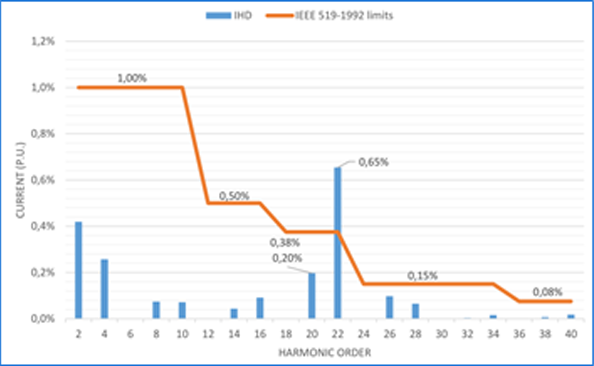
Results of an EMTP® study indicating an excessive magnitude of the 22nd harmonic in the inverter current

Frequency scan results indicating a positive equivalent resistance of the network (with the wind park connected)
at the resonance frequency (of about 29Hz), showing therefore no risk of SSCI.
EMTP® provides a comprehensive set of devices and control libraries allowing you to assemble and analyze detailed EMT models of renewable energy plants.
Here are the main advantages:

Menu of the EMTP®’s built-in Wind park model

The content of these models is accessible and customizable!
